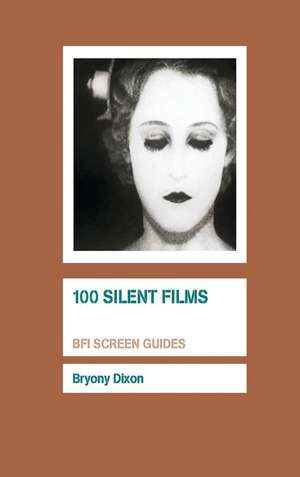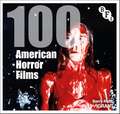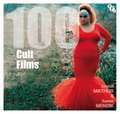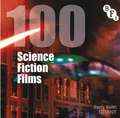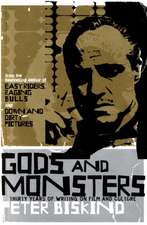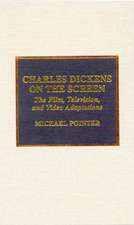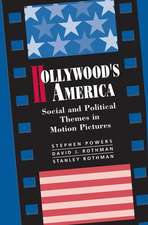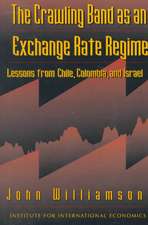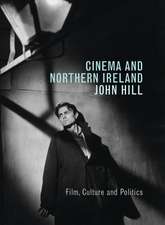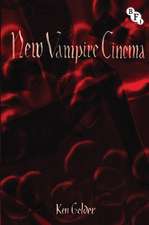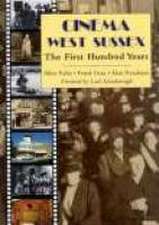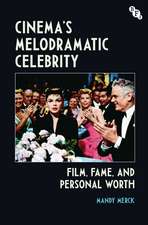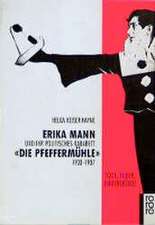100 Silent Films: Bfi Screen Guides
Autor Bryony Dixonen Limba Engleză Paperback – 20 iun 2011
| Toate formatele și edițiile | Preț | Express |
|---|---|---|
| Paperback (1) | 117.37 lei 6-8 săpt. | |
| Bloomsbury Publishing – 20 iun 2011 | 117.37 lei 6-8 săpt. | |
| Hardback (1) | 538.52 lei 3-5 săpt. | |
| British Film Institute – 21 iun 2011 | 538.52 lei 3-5 săpt. |
Preț: 117.37 lei
Preț vechi: 184.64 lei
-36% Nou
Puncte Express: 176
Preț estimativ în valută:
22.46€ • 24.39$ • 18.87£
22.46€ • 24.39$ • 18.87£
Carte tipărită la comandă
Livrare economică 22 aprilie-06 mai
Preluare comenzi: 021 569.72.76
Specificații
ISBN-13: 9781844573080
ISBN-10: 1844573087
Pagini: 288
Ilustrații: 35 b/w photos
Dimensiuni: 155 x 235 x 20 mm
Greutate: 0.36 kg
Ediția:2011
Editura: Bloomsbury Publishing
Colecția British Film Institute
Seria Bfi Screen Guides
Locul publicării:London, United Kingdom
ISBN-10: 1844573087
Pagini: 288
Ilustrații: 35 b/w photos
Dimensiuni: 155 x 235 x 20 mm
Greutate: 0.36 kg
Ediția:2011
Editura: Bloomsbury Publishing
Colecția British Film Institute
Seria Bfi Screen Guides
Locul publicării:London, United Kingdom
Caracteristici
Represents a range of countries, genres and filmmakers
Notă biografică
BRYONY DIXON is a curator at the BFI National Archive responsible for the collections of silent film. She has researched and written on many aspects of early and silent film and co-directs the annual British Silent Film Festival as well as programming for a variety of film festivals and events worldwide.
Cuprins
Acknowledgements.- Introduction.- The Adventures of Dollie, D. W. Griffith, 1908.- Alfred Butterworth & Sons, Leaving the Works, Glebe Mills, Hollinford, 1901, Mitchell and Kenyon, 1901.- Alice in Wonderland, Percy Snow, 1903.- Ballet Mécanique, 1924.- The Battle of the Somme, 1916.- The Battles of the Coronel and Falkland Islands, Walter Summers, 1928.- The Battleship Potemkin.- Bronenosets Potyomkin, Sergei M. Eisenstein, 1925.- Beggars of Life, William Wellman, 1928.- Berlin, Symphony of a City, Walter Ruttmann, 1927.- The Big Swallow, James Williamson, 1901.- The Birth of a Flower, F. Percy Smith, 1910.- The Birth of a Nation, D. W. Griffith, 1915.- Blackmail, Alfred Hitchcock, 1929.- Body and Soul, Oscar Micheaux, 1925.- The Cabinet of Dr Caligari.- Das Cabinet des Dr. Caligari, Robert Wiene, 1919.- Cabiria, Giovanne Pastrone, 1914.- The Cameraman's Revenge.- Mest' kinematografi?eskogo operatora, Ladislas Starewicz, 1912.- Casanova, Alexandre Volkoff, 1928.- The Cheat, Cecil B. DeMille, 1916.- Un chien andalou, Luis Buñuel, 1928.- A Cottage on Dartmoor, Anthony Asquith, 1929.- Daybreak.- Tianming, Sun Yu, 1933.- The Derby, Topical Film Company, 1913.- Les Deux Timides, Réne Clair, 1928.- Douro, faina fluvial.- Labour on the Douro River, Manoel de Oliveira, 1931.- Drifters, John Grierson, 1929.- Earth/Zemlya, Alexander Dovzhenko, 1930.- En Dirigeable sur les Champs de Bataille, Lucien Le Sainte, 1918.- The Fall of the House of Usher.- La chute de la maison Usher, Jean Epstein, 1928.- Finis Terrae, Jean Epstein, 1928.- Flesh and the Devil, Clarence Brown, 1926.- The General, Clyde Bruckman, Buster Keaton, 1926.- The Gold Rush, Charles Chaplin, 1925.- The Golem, How He Came into the World.- Der Golem, wie er in die Welt kam, Paul Wegener, Carl Boese, 1920.- Gösta Berlings Saga, Mauritz Stiller, 1924.- The Great Train Robbery, Edwin S. Porter, 1903.- The Great White Silence, Herbert Ponting, 1924.- Greed, Erich von Stroheim, 1925.- Heart of the World, Guy Maddin, 2000.- Hell's Hinges, Charles Swickard, 1916.- Hôtes de l'air, Oliver Pike, 1910.- How a Mosquito Operates, Winsor McCay, 1912.- L'Inferno, Giuseppe Beradi, Arturo Busnego, 1911.- The Informer, Arthur Robison, 1929.- It, Clarence Badger, 1927.- I Was Born, But., Yasujiro Ozu, 1932.- Japonaiserie, Gaston Velle, 1904.- The Kid, Charles Chaplin, 1921.- Lenin Kino-Pravda No. 21.- Leninskaia Kino Pravda, Dziga Vertov, 1925.- Liberty, Leo McCarey, 1929.- The Lodger: A Story of the London Fog, Alfred Hitchcock, 1926.- The Lure of Crooning Water, A. H. Rooke, 1920.- Man with a Movie Camera, Dziga Vertov, 1928.- Manhatta, Charles Sheeler, Paul Strand, 1921.- La Mariée du château maudit, Albert Capellani, 1910.- The Marriage Circle, Ernst Lubitsch, 1926.- Metropolis, Fritz Lang, 1927.- Monte Cristo, Henri Fescourt, 1929.- Nanook of the North: A Story of Life and Love in the Actual Arctic, Robert J. Flaherty, 1922.- Napoleon, Abel Gance, 1927.- The Nibelungen Saga.- Die Nibelungen Saga, Fritz Lang, 1924.- Nosferatu: A Symphony of Horrors.- Nosferatu: Eine Symphonie des Grauens, F. W. Murnau, 1922.- The Oyster Princess, Ernst Lubitsch, 1919.- Page of Madness.- Kurutta Ippeiji, Teinosuke Kinugasa, 1926.- Pandora's Box.- Die Buchse der Pandora, G. W. Pabst, 192.
Recenzii
This is no bluffer's guide. The enjoyment of silent cinema is Dixon's priority. As Dixon says when discussing Hell's Hinges (1916): "Nearly everything in current cinema can be traced back to the silent era." And that's why this guide is so valuable - anyone interested in how cinema became what it is today will find many of the answers here, both in Bryony Dixon's illuminating book and the films you will rush to watch the minute you put it down.
David Thomson is arguably the doyen of "film list" authors and Dixon shares both his rare ability to justify a choice with a single cinematic trump card and his lucid prose style - her description of Dziga Vertov's radical montage as "visual Esperanto" is inspired. She captures some of silent cinema's most sublime moments - Charlie Chaplin mournfully eating his shoelaces in The Gold Rush (1925) or the woodland chase in People on Sunday (1930) - with an infectious joy.
David Thomson is arguably the doyen of "film list" authors and Dixon shares both his rare ability to justify a choice with a single cinematic trump card and his lucid prose style - her description of Dziga Vertov's radical montage as "visual Esperanto" is inspired. She captures some of silent cinema's most sublime moments - Charlie Chaplin mournfully eating his shoelaces in The Gold Rush (1925) or the woodland chase in People on Sunday (1930) - with an infectious joy.
Textul de pe ultima copertă
?100
Silent
Filmsprovides
an
authoritative
and
accessible
history
of
silent
cinema
through
one
hundred
of
its
most
interesting
and
significant
films.
As
Bryony
Dixon
contends,
silent
cinema
is
not
a
genre;
it
is
the
first
35
years
of
film
history,
a
complex
negotiation
between
art
and
commerce
and
a
union
of
creativity
and
technology.
At
its
most
grand
–
on
the
big
screen
with
a
full
orchestral
accompaniment
–
it
is
magnificent,
permitting
a
depth
of
emotional
engagement
rarely
found
in
other
fields
of
cinema.
Silent
film
was
hugely
popular
in
its
day,
and
its
success
enabled
the
development
of
large-scale
film
production
in
the
United
States
and
Europe.
It
was
the
start
of
our
fascination
with
the
moving
image
as
a
disseminator
of
information
and
as
mass
entertainment
with
its
consequent
celebrity
culture.
The digital revolution in the last few years and the restoration and reissue of archival treasures have contributed to a huge resurgence of interest in silent cinema. Bryony Dixon's illuminating guide introduces a wide range of films of the silent period (1895–1930), including classics such asThe Birth of a Nation(1915),The General(1926),Metropolis(1927),Sunrise(1927) andPandora's Box(1928), alongside more unexpected choices, and represents major genres and directors of the period – Griffith, Keaton, Chaplin, Murnau, Sjöström, Dovzhenko and Eisenstein – together with an introductory overview and useful filmographic and bibliographic information.
The digital revolution in the last few years and the restoration and reissue of archival treasures have contributed to a huge resurgence of interest in silent cinema. Bryony Dixon's illuminating guide introduces a wide range of films of the silent period (1895–1930), including classics such asThe Birth of a Nation(1915),The General(1926),Metropolis(1927),Sunrise(1927) andPandora's Box(1928), alongside more unexpected choices, and represents major genres and directors of the period – Griffith, Keaton, Chaplin, Murnau, Sjöström, Dovzhenko and Eisenstein – together with an introductory overview and useful filmographic and bibliographic information.
